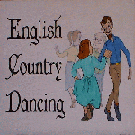User Tools
Sidebar
O Susato
Victor Skowronski (2000)
Longways duple improper
Music: Ronde IX (Tielman Susato),
Recordings: o_susato--040.mp3.zip
o_susato-ronde_ix_057-dhp-04.mp3.zip
A1 1-2 Neighbor arm right
3-4 Neighbor set & turn single (end facing partner)
A2 1-2 Partner arm left
3-4 Partner set and turn single
B1 1-2 Partner siding (swirly) left
3 Partner pass right
4 Cloverleaf turn single (away from neighbor)
B2 1-2 Neighbor siding (swirly) left
3 Neighbor pass right
4 Partner pass left
(end in a line of four, facing up, 1s on the end)
C1 1-2 Lines up a double & back
3-4 Change with partner:
Ends cast down, half-figure up and face up at
the other end of the line WHILE
2s cross up, cast down and lead up
into the middle of the line
C2 1-2 Lines up a double & back
3-4 Change back and progress:
Ends cast down, half-figure up and move down
to face new 2s while 2s cross up, cast down
and lead up to face new 1s
Last time
C2 3-4 (Face the presence) honor left & right
Video: https://www.youtube.com/watch?v=Z5tBnngDrc4
https://www.youtube.com/watch?v=BsoFQRe4bos
The tune, called “Ronde IX” was composed by Tielman Susato in 1551.
The melody is an adaptation of “Mon Desir,” a basse-danse by Tielman Susato that had been published exactly a century earlier, in 1551. The baas-dance, called in Italy bassa, and in France basse, in the north of England a base-dance, was described by one writer in France in 1496 as one in which “one adopts a countrified manner, abandoning courtly dance.” Although a basse-dance could take a number of forms, with different numbers of dancers and different sexes, processional, progressive, etc., it was informal rather than courtly


